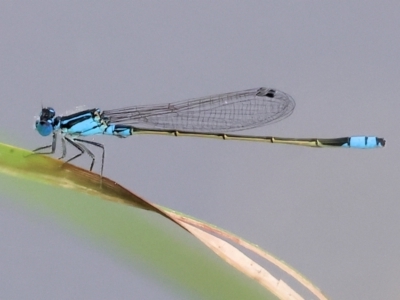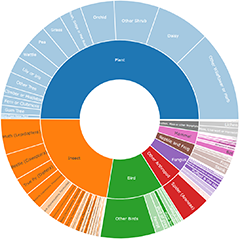Insects
A guide to Australian insect families (from CSIRO) can be found at:
http://anic.ento.csiro.au/insectfamilies/
Daley, A. & Ellingsen, K., 2012. Insects of Tasmania: An online field guide
A useful introduction to Insects, visit:
http://australianmuseum.net.au/uploads/documents/9362/invertebrate_guide.pdf
A diagram of Insect morphology illustrating terminology with legend of body parts:
https://en.wikipedia.org/wiki/Insect_morphology#/media/File:Insect_anatomy_diagram.svg
A diagram of an insect illustrating terminology based on a worker ant, see:
https://en.wikipedia.org/wiki/Gaster_(insect_anatomy)#/media/File:Scheme_ant_worker_anatomy-en.svg
Photographing insects
There are two main ways to photograph insects with a camera: using a macro close-up lens or a zoom lens. If the insect tolerates your getting very close, then you can use the macro lens. For example, some moths will remain quite still when approached, believing they are camouflaged and invisible. However, many insects, especially those that can fly, will move away when you approach. This is especially true for insects like butterflies and dragonflies. So a good zoom lens is very useful for photographing many insects. If you are using a smartphone, then use a macro lens or a macro attachment. E.g. OlloClip for iPhone. If you want to have an insect identified to species then clear photographs are usually needed because minute parts of the anatomy may need to be checked. It is valuable to take several photos from various angles so that these anatomical details can be seen. Many insects are have particular plants that they feed on, and they can be identified more easily when the associated plant is known. So if the insect is resting or feeding on a plant, take note of what the plant is or ensure that a photo shows the plant clearly.
Announcements
Since 1 Jan 2025, NatureMapr 44% of all sightings uploaded were NSW based, while 43% were from the ACT.The remaining 13% were from other states, with VIC coming in third at 5%.Strictly speaking, 67% o...
Continue reading
NatureMapr Data Collector 6.2.1 update
Critical nature positive infrastructure update
IMPORTANT NatureMapr Data Collector 6.2.0 mobile app update
Known issue affecting user registration via naturemapr mobile app
Discussion
Unidentified Wasp (Hymenoptera, Apocrita)
Miridae (family)
Significant sightings
- Lamprogaster relucens at Bandiana, VIC
- Callidemum hypochalceum at Albury, NSW
- Eurymela fenestrata at West Wodonga, VIC
- Lophyrotoma analis at Wodonga, VIC
- Laccotrephes tristis at Hamilton Valley, NSW
- Comptosia stria at Wodonga
Recent activity
Halyini (tribe) at West Wodonga, VIC
Halyini (tribe) at West Wodonga, VIC
Halyini (tribe) at Wodonga, VIC
Omyta centrolineata at Wodonga, VIC
Polistes sp. (genus) at Wodonga
Top contributors
- AlisonMilton 8.6K
- kasiaaus 8.6K
- Hejor1 7.7K
- ConBoekel 4.7K
- trevorpreston 4.5K
- jb2602 4.4K
- Harrisi 3.3K
- TimL 3.2K
- KylieWaldon 2.8K
- MatthewFrawley 2.8K
Top moderators
- MichaelMulvaney 20.4K
- donhe 16.6K
- ibaird 14K
- AlisonMilton 10.5K
- KimPullen 5.8K
- RogerF 5.6K
- SuziBond 5.5K
- HarveyPerkins 4.6K
- MichaelBedingfield 4.3K
- owenh 3.8K
































































































